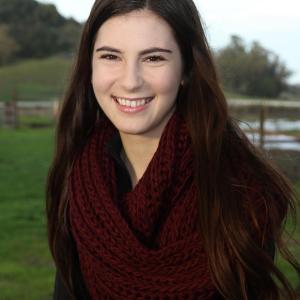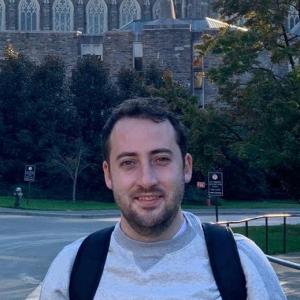Research
The overarching goals of the Luftig Lab research program are to understand the molecular mechanisms that enable Epstein-Barr virus to establish latency, switch to the lytic cycle, and promote disease. We use cutting-edge, cross-disciplinary and highly collaborative approaches to characterize the temporal dynamics and single cell heterogeneity of EBV infection. With these strategies, we aim to discover fundamental molecular circuits underlying transcriptional control, viral manipulation of host signaling pathways, and metabolic regulation that collectively influence infected cell fate decisions. By understanding the nature of viral control of infected host cells, we are also well positioned to discover vulnerabilities in EBV-associated diseases and characterize new therapeutic interventions in cell-based and pre-clinical animal models.
Biography
Micah Luftig graduated from the Louisiana State University with a B.S. in Microbiology in 1998. During his undergraduate career, he worked on herpesvirus glycoproteins and virus entry. He worked with Dr. Gus Kousoulas at LSU in Baton Rouge and completed an Oak Ridge Fellowship in the Herpesvirus section at the Centers for Disease Control in Atlanta under section chief, Dr. Phil Pellet. His undergraduate research identified the biochemical features of the major virion-associated fusion glycoprotein B (gB) on Kaposi’s sarcoma-associated herpesvirus.
He then moved to Boston as a graduate student in the Program in Virology at Harvard Medical School. Initially, he worked in Dr. Don Wiley’s lab continuing the biochemical study of herpesvirus glycoproteins. He crystallized the complex of HSV-1 gD and its receptor nectin-1, a structure that would be solved nine years later in the group of Dr. Andrea Carfi. His thesis research was in Dr. Elliott Kieff’s lab studying Epstein-Barr virus (EBV). He identified the genetic requirements of NFkB activation by the viral oncoprotein, latent membrane protein 1. These studies have been corroborated by others and laid the foundation for understanding the molecular basis of diverse NFkB activation pathways. He followed up these studies with a proteomic analysis of the purified Epstein-Barr virus enveloped particle and nucleocapsid. This benchmark biochemical paper identified a number of novel virion components including a role for host cytoskeletal and chaperone proteins in the mature virion. He was awarded a Ph.D. in Virology in 2003.
Dr. Luftig next joined the group of Dr. Andrea Carfi in the Department of Biochemistry at the Istituto di Ricerca di Biologia Molecolare (IRBM) “P. Angeletti” in Pomezia, Italy (outside of Rome). He was awarded an EMBO Long-Term Postdoctoral Fellowship for his structural studies on viral glycoproteins. At IRBM, he solved the crystal structure of the HIV gp41 protein bound to the cross-neutralizing antibody D5. These studies illuminated a novel mechanism of virus neutralization that has broad implications in vaccine immunogen design. Following this work, he initiated studies of the host response of primary B cells to EBV infection.
In 2007, he began his independent laboratory as an Assistant Professor in the Department of Molecular Genetics and Microbiology at Duke University Medical Center. His work is focused on the question of what host pathways respond to and negatively regulate the immortalization of primary human B cells by EBV. He was appointed as the Deputy Director of the Duke Center for Virology in 2009. In 2015, he was promoted to Associate Professor with Tenure. His work has expanded to inlude cellular and molecular studies of the virus/host interactions that regulate B-cell transformation as well as how EBV contributes to gastric cancer and the role P. falciparum malaria plays together with EBV in promoting Burkitt lymphoma. In 2017, Dr. Luftig became co-Vice Chair of MGM with a purview including research and innovation efforts in the department. In 2018, he became Director of the Duke Center for Virology.
Lab Members
Alumni
| NAME | CURRENT POSITION | LOCATION |
|---|---|---|
| Joanne Dai | Postdoctoral Researcher | Amgen |
| Joshua Messinger | Research Scientist | IconOvir |
| Amy Hafez | AAAS Congressional Science & Engineering Fellow | AAAS |
| Nick Homa | Project Management and Clinical Pharmacology Specialist | Nuventra Pharma Sciences |
| Alexander Price | Post-Doctoral Fellow | Children’s Hospital of Philadelphia, Weitzman Lab |
| Pavel Nikitin | Director | Immunome |
| NAME | CURRENT POSITION | LOCATION |
|---|---|---|
| Jana Cable | Post-doctoral Fellow |
Jacob Yount's Lab |
| Karyn McFadden | Scientist, Antibody Drug Discovery | Amgen |
| Gyorgy Fenyofalvi | Clinical Genomics Scientist | Labcorp |
| Eleonora Forte | Research Assistant Professor | Northwestern University |
| Alessio Bocedi | Researcher | University of Rome |
| Brent Stanfield | Research Assistant Professor | Louisiana State University |
| NAME | CURRENT POSITION | LOCATION |
|---|---|---|
| Kim Ng | Attending Physician, Pediatrics | Children’s Hospital of Philadelphia |
| NAME | CURRENT POSITION | LOCATION |
|---|---|---|
| John Lu | MD/PhD Student | Stanford University |
| Chris Chang | MD/PhD Student | University of California, San Francisco |
| Cristina Salinas | Medical Student | Alix Medical School at the Mayo Clinic |
| Frank Cai | Consultant | Accenture |
| Lisa Grossman | MD/PhD Student | Columbia University |
| Christina Chang | Graduate Student | University of California, San Diego |
| Jing Guo | Consultant | Accenture |
| Katherine Hu | Surgery Resident | Medical College of Wisconsin |
| Thera Lee | Graduate Student | University of Minnesota |
| David Tainter | Orthopedic Surgeon | Delaware Orthopaedic Specialists |
| Kaeden Hill | ||
| Rachel ‘Neha’ Shaw |
Publications
Representative Publications:
2021
- SoRelle ED, Dai J, Bonglack EN, Heckenberg E, Zhou JY, Giamberardino SN, Bailey JA, Gregory SG, Chan C, Luftig MA (2021) Single-cell characterization of transcriptomic heterogeneity in lymphoblastoid cell lines. eLife Jan 27;10: e62586. [Article]
- Bonglack EN, Messinger JE, Cable JM, Parnell KM, Ch’ng J, Christofk HR, Luftig MA (2021) Monocarboxylate transporter antagonism reveals metabolic vulnerabilities of viral-driven lymphomas. Proc Natl Acad Sci U S A 118: e2022495118 doi 10.1073/pnas.2022495118. [Article]
- Zaffiri, L., Frankel, C., Bush, E.J., Neely, M.L., Pavlisko, E.N., Mokrova, I.L., Luftig, M.A., and Palmer, S.M. (2021). Evidence of Epstein-Barr virus heterogeneous gene expression in adult lung transplant recipients with posttransplant lymphoproliferative disorder. J Med Virol 93, 5040-5047. [Article]
- Yellen BB, Zawistowski JS, Czech EA, Sanford CI, SoRelle ED, Luftig MA, Forbes ZG, Wood KC, Hammerbacher J (2021) Massively parallel quantification of phenotypic heterogeneity in single cell drug responses. Science Advances. 7(38):eabf9840. [Article]
- Padmanabhan N, Kyon HK, Boot A, Lim K, Srivastava S, Chen S, Wu Z, Lee HO, Mukundan VT, Chan C, Chan YK, Xuewen O, Pitt JJ, Isa ZFA, Xing M, Lee MH, Tan ALK, Ting SHW, Luftig MA, Kappei D, Kruger WD, Bian J, Ho YS, Teh M, Rozen SG, Tan P (2021) Highly recurrent CBS epimutations in gastric cancer CpG island methylator phenotypes and inflammation. Genome Biol 22: 167. [Article]
- Klionsky DJ,… Luftig MA, …, Brand-Saberi B, Dong XC, Kenchappa CS, Li Z, Lin Y, Oshima S, Rong Y, Sluimer JC, Stallings CL, Tong CK (2021) Guidelines for the use and interpretation of assays for monitoring autophagy (4th edition)(1). Autophagy 17: 1-382. [Article]
- Dai J, Heckenberg E, Song L, Crawford GE, Luftig MA (2021) Epstein-Barr virus prom otes survival through germinal center light zone chromatin architecture. bioRxiv. [Article]
- SoRelle ED, White S, Yellen BB, Wood KC, Luftig MA, Chan C (2021) Comparing instance segmentation methods for analyzing clonal growth of single cells in microfluidic chips. bioRxiv. [Article]
2020
- Kaymaz Y, Oduor CI, Aydemir O, Luftig MA, Otieno JA, Ong’echa JM, Bailey JA, Moormann AM (2020) Epstein-Barr Virus Genomes Reveal Population Structure and Type 1 Association with Endemic Burkitt Lymphoma. J Virol Aug 17;94(17):e02007-19. [Article]
- Stanland LJ, Luftig MA (2020) The Role of EBV-Induced Hypermethylation in Gastric Cancer Tumorigenesis. Viruses 12(11):1222. [Article]
2019
- Stanland LJ and Luftig MA (2019) Molecular features and translational outlook for Epstein-Barr virus-associated gastric cancer. Future Virology 13 (11): 803–18. [Article]
- Messinger, JE, Dai J, Stanland LJ, Price AM, Luftig MA (2019) Identification of Host Biomarkers of EBV Latency IIb and Latency III. mBio 10:e01006-19. [Article]
- Purdy JG, Luftig MA (2019) Reprogramming of cellular metabolic pathways by human oncogenic viruses. Curr Opin Virol. Dec;39:60-69. [Article]
- Panea RI, Love CL, Shingleton JR, Reddy A, Bailey JA, Moormann AM, Otieno JA, Ong’echa JM, Oduor CI, Schroeder KMS, Masalu N, Chao NJ, Agajanian M, Major MB, Fedoriw Y, Richards KL, Rymkiewicz G, Miles RR, Alobeid B, Bhagat G, Flowers CR, Ondrejka SL, Hsi ED, Choi WWL, Au-Yeung RKH, Hartmann W, Lenz G, Meyerson H, Lin YY, Zhuang Y, Luftig MA, Waldrop A, Dave T, Thakkar D, Sahay H, Li G, Palus BC, Seshadri V, Kim SY, Gascoyne RD, Levy S, Mukhopadyay M, Dunson DB, Dave SS (2019) The whole-genome landscape of Burkitt lymphoma subtypes. Blood. Nov 7;134(19):1598-1607. doi: 10.1182/blood.2019001880. [Article]
2018
- Hafez AY and Luftig MA (2018) DNA Tumour Viruses and the Host DNA damage response. DNA Tumour Viruses: Virology, Pathogenesis, and Vaccines. Ed. Sally Roberts. Caister Academic Press Jun pas 215-230. doi: 10.21775/9781910190791.11. [Article]
- Dai J and Luftig MA (2018) Intracellular BH3 profiling reveals shifts in antiapoptotic dependency in human B cell maturation and mitogen-stimulated proliferation. J Immunol Mar 1;200(5):1727-1736. doi: 10.4049/jimmunol.1701473. [Article]
- Price AM*, Messinger JE*, Luftig MA (2018) c-Myc represses transcription of Epstein-Barr virus latent membrane protein 1 early after primary B cell infection. J Virol Jan 2;92(2):e01178-17. doi: 10.1128/JVI.01178-17. (* authors contributed equally to this article) [Article]
2017
- Hafez AY and Luftig MA (2017) Characterization of the EBV-induced persistent DNA damage response. Viruses MDPI Dec 1;9(12):366. doi: 10.3390/v9120366. [Abstract] [Article]
- Grossman L, Chang C, Dai J, Nikitin PA, Jima DD, Dave SS, Luftig MA (2017) Epstein-Barr virus induces adhesion receptor CD226 (DNAM-1) expression during primary B-cell transformation of lymphoblastoid cell lines. mSphere Nov 29;2(6):e00305-17. doi: 10.1128/mSphere.00305-17. [Article]
- Poling BC, Price AM, Luftig MA, Cullen BR (2017) The Epstein-Barr virus miR-BHRF1 microRNAs regulate viral gene expression in cis. Virology Oct 20;512:113-123. doi: 10.1016/j.virol.2017.09.015. [Article]
- Hafez AY, Messinger JE, Fenyofalvi G, McFadden K, Shepard CN, Lenzi GM, Kim B, Luftig MA (2017) Limited nucleotide pools restrict Epstein-Barr virus-mediated B-cell immortalization. Oncogenesis Jun 12;6(6):e349. doi: 10.1038/oncsis.2017.46. [Article]
- Price AM, Dai J, Bazot Q, Patel L, Nikitin PA, Djavadian R, Winter PS, Salinas CA, Barry AP, Wood KC, Johannsen EC, Letai A, Allday MJ, Luftig MA (2017) Epstein-Barr virus ensures B cell survival by uniquely modulating apoptosis at early and late times after infection. Elife e22509. doi: 10.7554/eLife.22509. [Article]
- Stanfield BA, Luftig MA (2017) Recent advances in understanding Epstein-Barr virus. F1000Res 2017 Mar 29;6:386. doi: 10.12688/f1000research.10591.1. [Article]
2016
- McFadden K, Hafez AY, Kishton R, Messinger JE, Nikitin PA, Rathmell JC, Luftig MA (2016) Metabolic stress is a barrier to Epstein-Barr virus mediated B-cell immortalization. Proc Natl Acad Sci U S A 113:E782-90. [Article]
2015
- Price AM, Luftig, MA (2015) To Be or Not IIb: A Multi-Step Process for Epstein-Barr Virus Latency Establishment and Consequences for B Cell Tumorigenesis. PLoS Pathog 11: e1004656.PLoS Pathog. 2015 Mar 19;11(3):e1004656. doi: 10.1371/journal.ppat.1004656. [Article]
2014
- Luftig, M.A. (2014). “Viruses and the DNA Damage Response: Activation and Antagonism.” Annual Review of Virology, Vol. 1:605 -625 (Volume publication date November 2014). [Abstract] [Article] [PDF]
- Nikitin, P.A., Price, A.M., McFadden, K., Yan, C.M., Luftig M.A. (2014). “Mitogen-induced B-cell proliferation activates Chk2-dependent G1/S cell cycle arrest.” PLoS One. (2014). 9(1):e87299. [Article]
- Price, A.M., Luftig, M.A. (2014). “Dynamic Epstein-Barr virus gene expression on the path to B-cell transformation.” Adv Virus Res. 88:279-313. [Abstract] [Article]
2013
- Olive, V., Sabio, E., Bennett, M.J., De Jong, C.S., Biton, A., McGann, J.C., Greaney, S.K., Sodir, N.M., Zhou, A.Y., Balakrishnan, A., Foth, M., Luftig, M.A., Goga, A., Speed, T.P., Xuan, Z., Evan, G.I., Wan, Y., Minella, A.C., He, L. (2013). “A component of the mir-17-92 polycistronic oncomir promotes oncogene-dependent apoptosis.” Elife. Oct 15;2:e00822. [Abstract] [Article]
- Homa, N.J., Salinas, R., Forte, E., Robinson, T.J., Garcia-Blanco, M.A., Luftig, M.A. (2013). “Epstein-Barr virus induces global changes in cellular mRNA isoform usage important for the maintenance of latency.” J Virol. 2013 Sep 11. [Abstract] [Article]
- McFadden, K., Luftig, M.A. “Interplay between DNA tumor viruses and the host DNA damage response.” (2013). Curr Top Microbiol Immunol. 371:229-57. Review. [Abstract] [Article]
2012
- Price, A.M., J.P. Tourigny, E. Forte, R. E. Salinas, S.S. Dave, Luftig, M.A. (2012). “Analysis of EBV-Regulated Host Gene Expression Changes through Primary B-Cell Outgrowth Reveals Delayed Kinetics of LMP1-Mediated NFΚB Activation.” J Virol. 86(20):11096-106. [Abstract][Article]
- Robinson, T.J., E. Forte, R.E. Salinas, S. Puri, M. Marengo, M.A. Garcia-Blanco, Luftig, M.A. (2012). “SplicerEX: A tool for the automated detection and classification of mRNA changes from conventional and splice-sensitive microarray expression data.” RNA. 18(8):1435-45. [Abstract] [Article]
- Nikitin, P.A., Luftig, M.A. (2012). “The DNA damage response in viral-induced cellular transformation. Br J Cancer. 106:429-435. [Article]
- Skalsky, R.L., Corcoran, D.L., Gottwein, E., Frank, C.L., Kang, D., Hafner, M., Nusbaum, J.D., Feederle, R., Delecluse, H.J., Luftig, M.A., Tuschl, T., Ohler, U., Cullen, B.R. (2012). “The viral and cellular microRNA targetome in lymphoblastoid cell lines.” PLoS Pathog. 8: e1002484. [Article]
- Forte, E., Salinas, R., Chang, C., Zhou, T., Linnstaedt, S.D., Gottwein, E., Jacobs, C., Jima, D., Li, Q.J., Dave, S.S., Luftig. M.A. (2012). The Epstein-Barr virus induced tumor suppressor miR-34a is growth promoting in EBV-infected B cells. J Virol. 86, 6889-6898. [Article]
2011
- Forte, E., Luftig, M.A. (2011). “The role of microRNAs in Epstein-Barr virus latency and lytic reactivation.” Microbes Infect. 13:1156-1167. [Abstract] [Article]
- Nikitin, P.A, Luftig, M.A. (2011). “At a crossroads: Human DNA tumor viruses and the host DNA damage response.” Future Virol. 6: 813-830. [Abstract] [Article]
2010
- Nikitin, P.A., Yan, C.M., Forte, E., Bocedi, A., Tourigny, J.P., Hu, K., Guo, J., Tainter, D., Rusyn, E. and Luftig, M.A. (2010). “An ATM/Chk2-mediated DNA damage responsive signaling pathway suppresses Epstein-Barr virus transformation of primary human B cells.” Cell Host Microbe. Dec 16;8(6):510-22. [Article]
- Linnstaedt, S.D., E. Gottwein, R.L. Skalsky, Luftig, M.A., and Cullen, B.R. (2010). “Virally induced cellular miR-155 plays a key role in B-cell immortalization by EBV.” J Virol. Nov;84(22):11670-11678. [Epub 2010 Sept 15]. [Article]
2009
- Forte, E. and Luftig, M.A. (2009). “MDM2-dependent inhibition of p53 is required for Epstein-Barr virus B cell growth transformation and infected cell survival.” J Virol.(2009). 83:2491-2499. [Epub 2009 Jan 14]. [Article]
Prior to Duke
- Di Giovine P, Settembre EC, Bhargava AK, Luftig MA, Lou H, Cohen GH, Eisenberg RJ, Krummenacher C, Carfi A (2011) Structure of herpes simplex virus glycoprotein D bound to the human receptor nectin-1. PLoS Pathog 7: e1002277.
- Montgomery DL, Wang YJ, Hrin R, Luftig M, Su B, Miller MD, Wang F, Haytko P, Huang L, Vitelli S, Condra J, Liu X, Hampton R, Carfi A, Pessi A, Bianchi E, Joyce J, Lloyd C, Geleziunas R, Bramhill D, King VM, Finnefrock AC, Strohl W, An Z (2009) Affinity maturation and characterization of a human monoclonal antibody against HIV-1 gp41. MAbs 1: 462-474.
- Luftig MA, Mattu M, Di Giovine P, Geleziunas R, Hrin R, Barbato G, Bianchi E, Miller MD, Pessi A, Carfi A (2006) Structural basis for HIV-1 neutralization by a gp41 fusion intermediate-directed antibody. Nat Struct Mol Biol 13: 740-747.
- Johannsen E*, Luftig M*, Chase MR, Weicksel S, Cahir-McFarland E, Illanes D, Sarracino D, Kieff E (2004) Proteins of purified Epstein-Barr virus. Proc Natl Acad Sci U S A 101: 16286-16291. * Equal contribution.
- Yasui T, Luftig M, Soni V, Kieff E (2004) Latent infection membrane protein transmembrane FWLY is critical for intermolecular interaction, raft localization, and signaling. Proc Natl Acad Sci U S A 101: 278-283.
- Luftig M, Yasui T, Soni V, Kang MS, Jacobson N, Cahir-McFarland E, Seed B, Kieff E (2004) Epstein-Barr virus latent infection membrane protein 1 TRAF-binding site induces NIK/IKK alpha-dependent noncanonical NF-kappaB activation. Proc Natl Acad Sci U S A 101: 141-146.
- Luftig M*, Prinarakis E*, Yasui T, Tsichritzis T, Cahir-McFarland E, Inoue J, Nakano H, Mak TW, Yeh WC, Li X, Akira S, Suzuki N, Suzuki S, Mosialos G, Kieff E (2003) Epstein-Barr virus latent membrane protein 1 activation of NF-kappaB through IRAK1 and TRAF6. Proc Natl Acad Sci U S A 100: 15595-15600. * Equal contribution.
- Luftig MA, Cahir-McFarland E, Mosialos G, Kieff E (2001) Effects of the NIK aly mutation on NF‑κB activation by the Epstein-Barr virus latent infection membrane protein, lymphotoxin beta receptor, and CD40. J Biol Chem 276: 14602-14606.
- Baghian A, Luftig M, Black JB, Meng YX, Pau CP, Voss T, Pellett PE, Kousoulas KG (2000) Glycoprotein B of human herpesvirus 8 is a component of the virion in a cleaved form composed of amino- and carboxyl-terminal fragments. Virology 269: 18-25.






